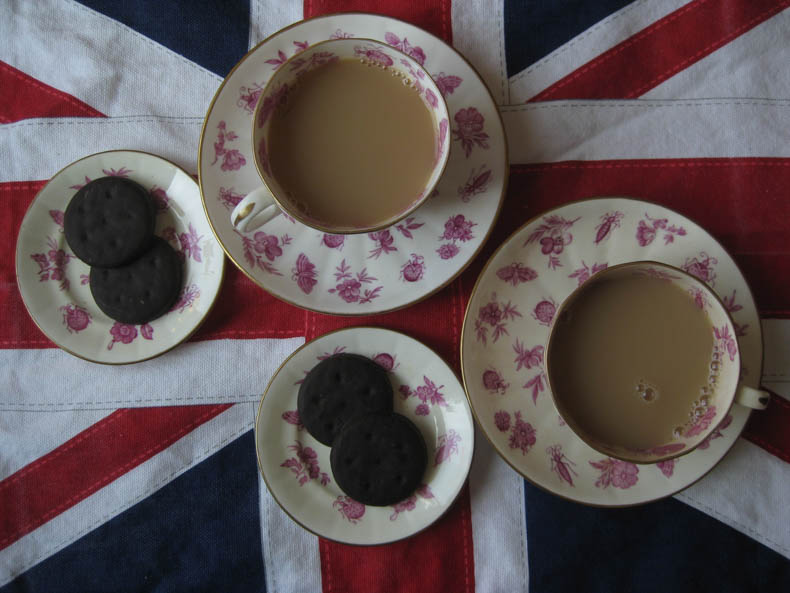
1991 or so: An overnight field trip to Wallops Island, Virginia.
The tap water is hot. I convince myself it’s hot enough to make tea, and make tea in my Nalgene. Why did I even have teabags with me? I think I wanted to be the kind of person who is prepared to make tea at all times. I also told everyone about the tea from the tap water. Because I was a teenager and it wasn’t enough to have tea, I also needed everyone else to know that this was the kind of person I was.
1998: Ski trip in Norway (less exotic than it sounds—I lived in Norway at the time)
There were a lot of British people, so after I put the hot water on the teabag, my mind made an association—British people, tea–milk! Except the tea was not really tea, but some kind of herbal “tea” with hibiscus or citrus or something, bright red, and I watched the stream of milk pass the surface of the liquid and curdle into blobs. I learned an important lesson that day, about what is tea and takes milk and what is not tea and does not take milk.
1998-2000: Japan
The tea was green. It was grassy, a little bitter, and strange. But it kept being served to me, and it was Japan, where you try to avoid being rude, so I kept sipping at it, and then one day I didn’t mind it anymore, and then one day it was all I wanted to drink. I bought it cold in bottles in summer and hot in cans in winter. A warm can of sencha in my pocket went a long way on a cold day.
2005: Washington, D.C.
In my second year as a reporter at U.S. News & World Report, I was assigned a story about tea. Did you know that tea, real tea–not that herbal stuff that curdled my milk–all comes from one plant? Black, oolong, green, white, pu-erh, they’re all the leaves of the Camilla sinensis bush, processed in different ways. U.S. News decided a few years ago to delete its archives—all those years of work, poof, gone—but I have the print version in my files and can share this quote on how to apply the findings of research studies on the health benefits of tea: “If you’re a rat, I’m telling you, you should be drinking lots of tea.” (Thanks, Jeffrey Blumberg, nutrition scientist at Tufts University.)
2017
Green tea, I still love you, but for good plain waking-up-in-the-morning, greeting-the-day, rise-and-shine goodness, I can’t beat a mug of English (or Irish) Breakfast with a bit of whole milk. A year or so ago I was looking at my teapot, feeling grateful for the entire sweep of human history and events that had brought me this tea at this moment. And then I realized I was talking about colonialism. Oh dear.
So here I am. I am no longer the kind of person who carries tea at all times, because it turns out most places I go have teabags and I’m not that picky. I’ll drink Lipton or whatever if I have to. But I guess I am the kind of person who will look at my teapot and contemplate what a magical plant is soaking inside.
Thanks, tea, for following me around the world with your aroma and your antioxidants and your caffeine. I appreciate it.
Photo: Helen Fields
Lovely read as I drink my afternoon cup of tea (made at work w stash of cardamom and lactaid milk I keep in the fridge). Black tea, of course. Indian style (chai) 🙂
Why is it that herbal teas curdle milk? Or some herbal teas, anyway? (Rooibos seems to be ok. How do you actually pronounce rooibos?)